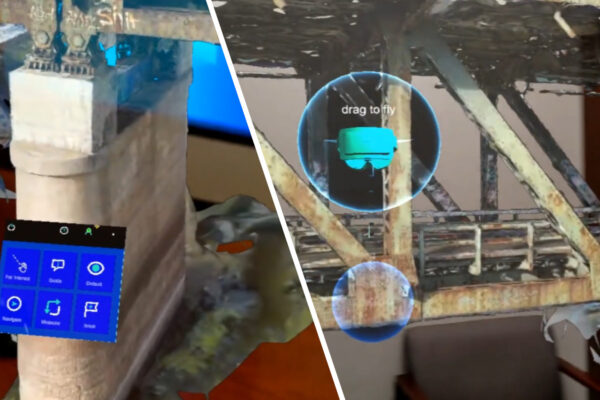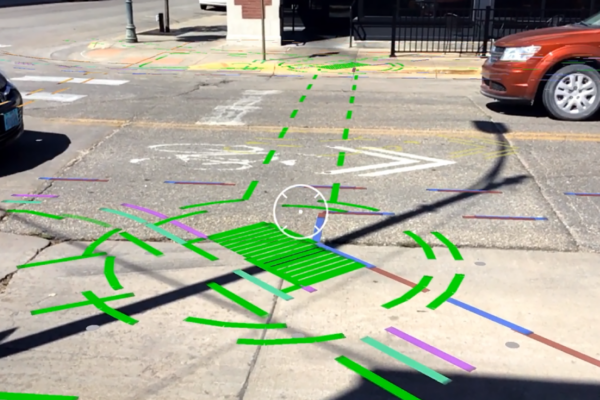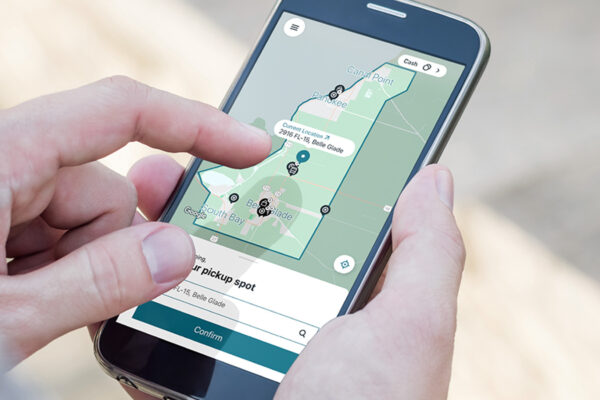The Rise of Microtransit
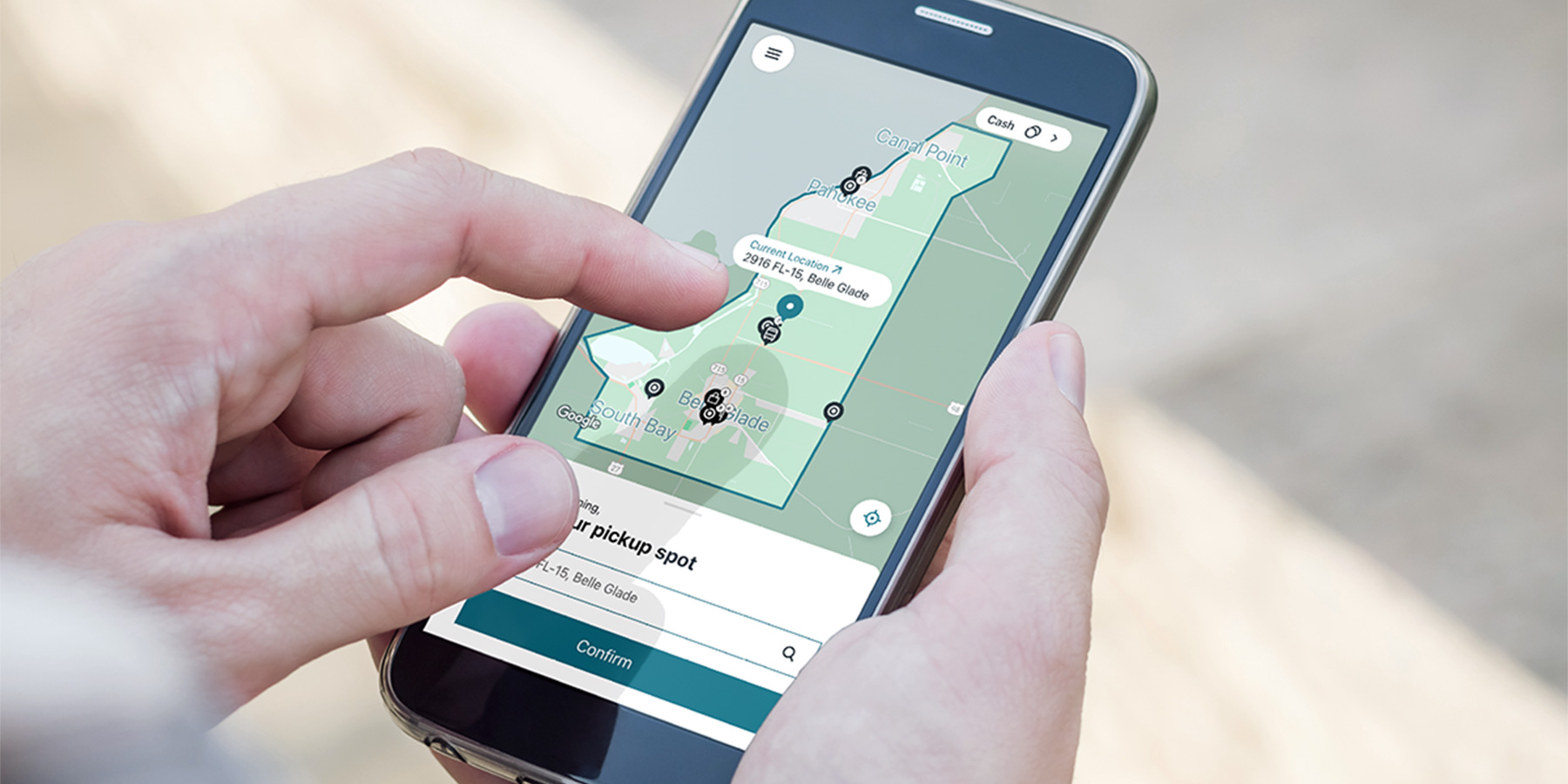
Despite being home to most Americans, suburban areas are rarely effectively served by traditional transit networks. To address this, a new transit concept is on the rise across the country: Mobility-on-Demand (MOD), also known as microtransit.
For years, Benesch Senior Project Manager Randy Farwell has seen this movement on the horizon and has been working with communities to implement and improve operating concepts and rules, as well as the supporting technology.
In the article below, Randy offers expert insight into MOD and shares success stories from the communities he has helped.
Meet Our Expert
My goal as a transit specialist has always been to create a transit service that responds to the customer, but that pursuit has often been limited by the availability and affordability of certain technologies. Since the early 2000s, I’ve worked with agencies to explore transit solutions that would better serve riders while creating a more efficient, cost-effective system. We created concepts and piloted systems but struggled to find the perfect solution, until the smartphone became so ubiquitous that it found its way into the hands of almost every rider.
The emergence of smartphones eventually brought the rise of rideshare services, and their success created broad market appeal for on-demand mobility. It also starkly demonstrated that rideshare services were more of a luxury and not a viable (or equitable) option for lower income persons. This combination of proof of concept and large equity divide in the affordability and use of these services, prompted me and many others in the industry to rethink and advocate for the potential for public transit applications.
These technologies have enabled us to build on previous concepts and develop a responsive mode of transit that fits a modern suburban rider—Mobility-On-Demand (MOD).
What is MOD and how does it work?
You’re probably familiar with Transportation Network Companies (TNC) like Uber and Lyft where users request a ride and get connected to a nearby driver. The rideshare or “pool” option, more popular pre-pandemic, allows riders headed in the same direction to share a ride at a lower cost. Behind the scenes, a set of algorithms are hard at work identifying the vehicle and route that optimizes the journey for both riders and driver.
While TNCs focus on matching a driver with a single rider—what’s known as a one-to-one solution—we work with transit agencies looking to efficiently provide shared rides (a many-to-one solution). MOD takes the concept of TNCs and translates it into something that can serve public transit riders.
When a ride is requested via app, the algorithms analyze all current ride requests, vehicle locations and itineraries, and generates an optimal solution for the riders and for the transit agency. Because data is collected in real-time for every trip request, the algorithms learn when and where spikes in demand are most likely to occur and the service supply can be balanced to closely match demand. This system is what MOD, or microtransit, refers to; it is a demand-driven customer focused mobility solution that integrates with fixed transit and paratransit to attract new riders and provide affordable, cost-effective mobility.
Of course, there’s a lot of work that happens before the app can be created. To create this system, we work alongside the transit agency to identify the service market and define services required in a given area. From there, we can help the agency develop operating rules and determine technology requirements. We support the agency through the software-as-a-service (SaaS) and transportation-as-a-service (TaaS) procurements that will translate the service from concept into a functioning app.
The Benefits of MOD
The average person is willing to travel a quarter to a half mile to access public transit. But in a suburban environment, you’re almost always much farther from a transit service than that. Residents are forced to rely on personal vehicles or are simply unable to access opportunities in nearby employment and activity centers. The problem in the suburbs is land use patterns and low density are not conducive to walking or transit.
Microtransit solves this problem by serving neighborhoods and areas that are difficult to access with a big bus, which in turn allows traditional fixed route service to stay focused on key arterial corridors that have a higher density of residential and commercial use. Microtransit offers curb-to-curb rides within a specified service zone that connect to fixed routes via mobility hubs for trips to destinations outside the zone, such as employment centers, downtowns, retail and medical centers. These services are more attractive to a suburban audience than typical bus service, as the trips are often shorter, more convenient and affordable.
To maximize the benefits, we focus on the strategic opportunities inherent in introducing microtransit into the transit agency’s family of services. We identify changes to the fixed route network, estimate ridership and the extent to which paratransit trips can be served by microtransit, and calculate the combined net operating cost savings.
Using this approach, microtransit can alleviate a significant share of the costs associated with much more expensive traditional paratransit service (services to be provided to persons based on eligibility under the Americans with Disabilities Act of 1990). The most common form of paratransit service requires users to request a ride 24-hours in advance. It operates under very specific and well-intended guidelines that have the effect of significantly limiting service productivity and thus increasing the cost of service.
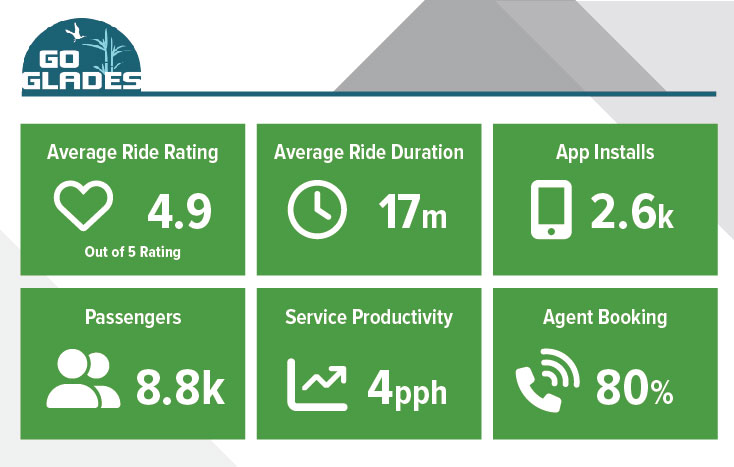
In practice most paratransit riders (65% – 75%) can navigate their travel curb-to-curb without any assistance. Meaning most paratransit riders can use a microtransit solution rather than the more expensive ADA paratransit service. For riders, using microtransit means immediate access to service, no 24-hour advance reservations and typically a smaller fare. For the transit agency, allowing paratransit riders to opt into microtransit means providing service at a fraction of the cost.
Our Successes
For the past few years, we’ve been working with agencies across the U.S. to implement MOD and microtransit options by helping them rethink their transit services, define and procure technology, and support the deployment of new mobility services.
- Sarasota County, FL – A Mobility Optimization Study performed by Benesch identified shared-ride point-to-point MOD solutions as a cost-effective solution for the county. Services were developed in four areas and deployed in June 2021. The service attracted over 50,000 microtransit trips per month. Learn More.
- Palm Beach, FL – A mobility service strategy (Go Glades) for the rural communities in the Glades Region near Lake Okeechobee was converted to point-to-point MOD by Benesch in February 2022. As of August 2022, monthly ridership exceeded 8,900, an increase of over 50% within six months with a significant shift by riders from paratransit and fixed route. Learn More.
- Round Rock, TX – Benesch worked with the City of Round Rock in Texas to define and develop an MOD service. We recommended the city acquire services through a Transportation-as-a-Service procurement, and we developed the technical specifications. The city concluded their procurement of the TaaS vendor in February 2023. Learn More.
- Cincinnati, OH – We developed six microtransit service zones for Go-Metro in Cincinnati to expand mobility in suburban areas with limited or no access to transit. An estimated additional 350,000 trips annual trips are expected to be served. The service will integrate with the Go-Metro fixed route network at designated mobility hubs and with the Access paratransit system to shift riders to microtransit as appropriate. Learn More.
- West Volusia County, FL – In one of our more recent projects, our team developed route optimization recommendations and designed a microtransit service. The net impact of restructuring the fixed route service and adding microtransit services to serve general public and ADA eligible riders is estimated to save the county $931k to $1.3 million annually.
If you consider the needs of modern communities, it’s not surprising that these MOD solutions are gaining popularity. In addition to offering a convenient transit solution that has proven to be cost-effective, microtransit brings broader benefits. It creates access to mobility and thus opportunity for more people, drives commerce, improves personal and community economic prospects, and helps reduce the number of cars on the road.
Benesch continues to work with transit agencies across the country to bring these opportunities and help them better serve their communities by navigating the changes and opportunities brought by these advances in technology.



